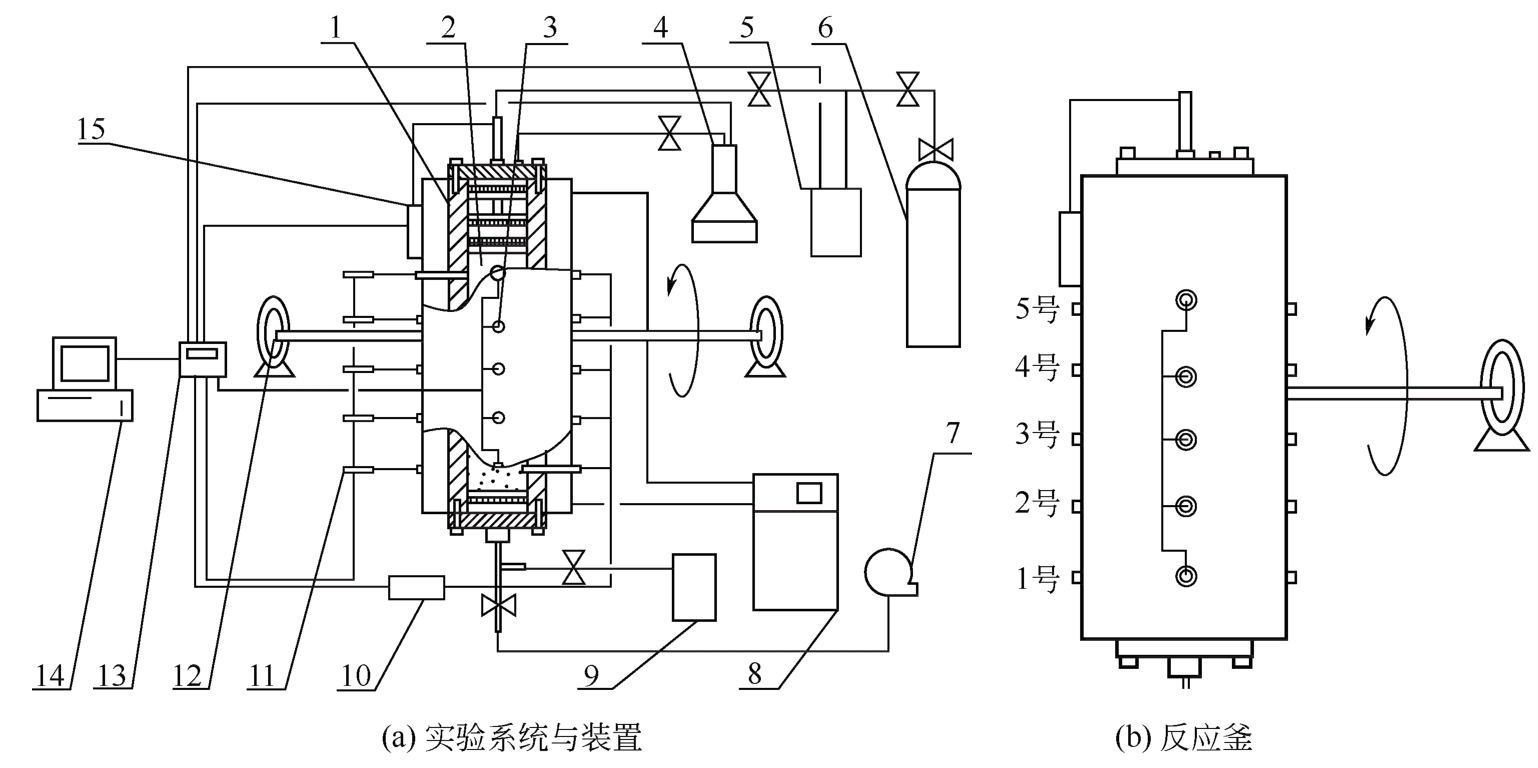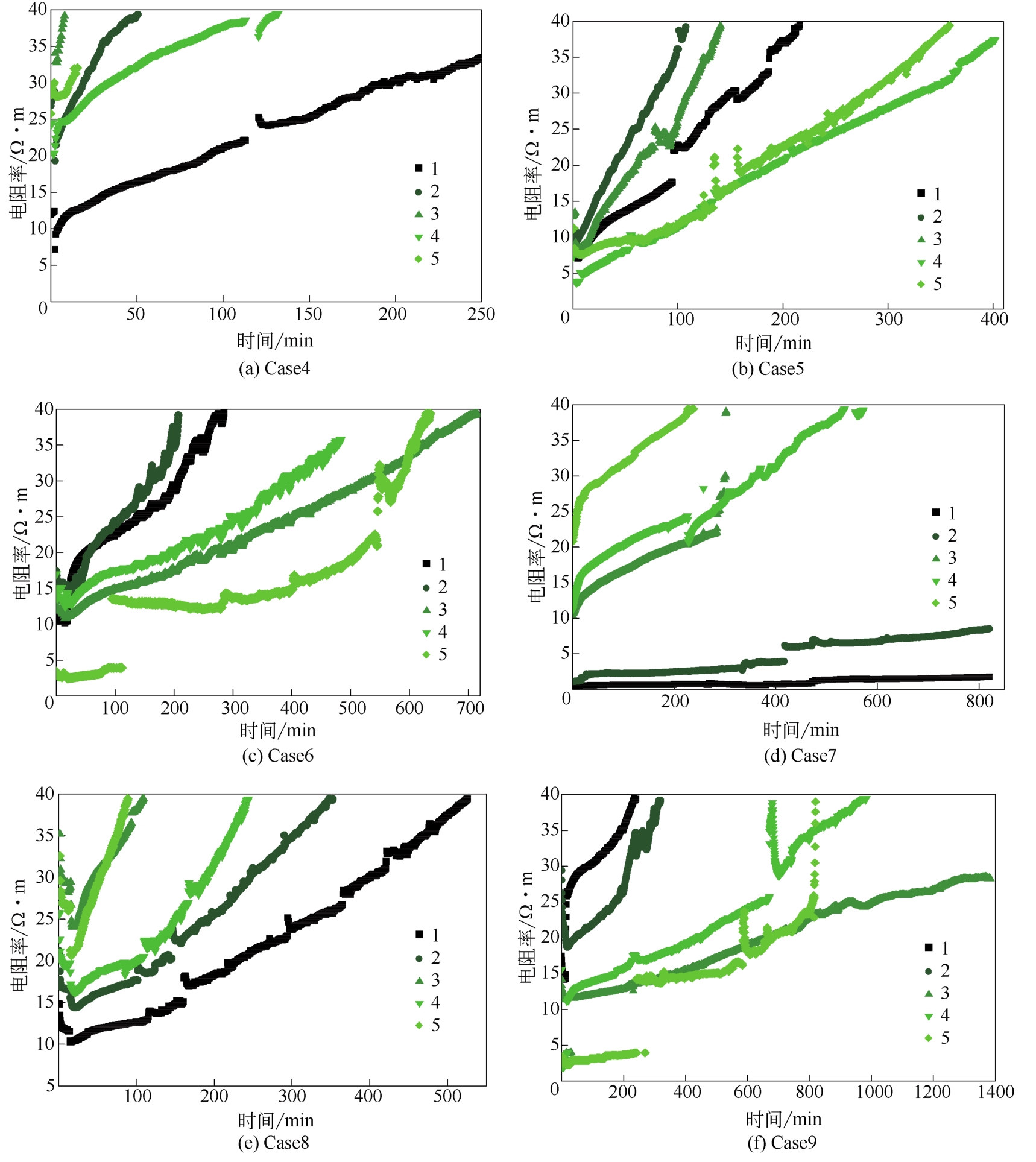| 1 |
AMINU M D, NABAVI S A, ROCHELLE C A, et al. A review of developments in carbon dioxide storage[J]. Applied Energy, 2017, 208: 1389-1419.
|
| 2 |
雷晓, 邓建强, 张早校. 海底沉积物层CO2封存中水合物研究进展[J]. 化工进展, 2012, 31(6): 1338-1346.
|
|
LEI Xiao,DENG Jianqiang, ZHANG Zaoxiao. Research advancement in hydrate formation during CO2 sub-sea sediments sequestration[J]. Chemical Industry and Engineering Progress, 2012, 31(6):1338-1346.
|
| 3 |
ZHANG Xuemin, LI Jinping, WU Qingbai, et al. Experimental study on the effect of pore size on carbon dioxide hydrate formation and storage in porous media[J]. Journal of Natural Gas Science and Engineering, 2015, 25: 297-302.
|
| 4 |
Shun OYA, AIFFAA Muhammad, OHMURA Ryo, et al. Formation, growth and sintering of CO2 hydrate crystals in liquid water with continuous CO2 supply: implication for subsurface CO2 sequestration[J]. International Journal of Greenhouse Gas Control, 2017, 63: 386-391.
|
| 5 |
HASSANPOURYOUZBAND Aliakbar, YANG Jinhai, TOHIDI Bahman, et al. Insights into CO2 capture by flue gas hydrate formation: gas composition evolution in systems containing gas hydrates and gas mixtures at stable pressures[J]. ACS Sustainable Chemistry & Engineering, 2018, 6: 5732-5736.
|
| 6 |
HASSANPOURYOUZBAND Aliakbar, YANG Jinhai, TOHIDI Bahman, et al. Geological CO2 capture and storage with flue gas hydrate formation in frozen and unfrozen sediments: method development, real time-scale kinetic characteristics, efficiency, and clathrate structural transition[J]. ACS Sustainable Chemistry & Engineering, 2019, 7: 5338-5345.
|
| 7 |
ALMENNINGEN Stian, BETLEM Peter, HUSSAIN Arif, et al. Demonstrating the potential of CO2 hydrate self-sealing in Svalbard[J]. International Journal of Greenhouse Gas Control, 2019, 89: 1-8.
|
| 8 |
LIU Yu, WANG Pengfei, YANG Mingjun, et al. CO2 sequestration in depleted methane hydrate sandy reservoirs[J]. Journal of Natural Gas Science and Engineering, 2018, 49: 428-434.
|
| 9 |
陈强, 业渝光, 孟庆国, 等. 多孔介质中 CO2 水合物饱和度与阻抗关系模拟实验研究[J]. 天然气地球科学, 2009, 20(2): 249-253.
|
|
CHEN Qiang, YE Yuguang, MENG Qingguo, et al. Simulation experiment of the relationship between CO2 hydrate saturation and resistance in porous media[J]. Natural Gas Geoscience, 2009, 20(2): 249-253.
|
| 10 |
SONG Yongchen, ZHOU Hang, MA Shihui, et al. CO2 sequestration in depleted methane hydrate deposits with excess water[J]. International Journal of Energy Research, 2018, 42: 2536-2547.
|
| 11 |
ZHANG Lunxiang, YANG Lei, WANG Jiaqi, et al. Enhanced CH4 recovery and CO2 storage via thermal stimulation in the CH4/CO2 replacement of methane hydrate[J]. Chemical Engineering Journal, 2017, 308: 40-49.
|
| 12 |
TAKEYA Satoshi, HORI Akira, HONDOH Takeo, et al. Freezing-memory effect of water on nucleation of CO2 hydrate crystals[J]. Journal of Physical Chemistry B, 2000, 104: 4164-4168.
|
| 13 |
COQUELET Cluistophe, CHAPOY Antonin, RICHON Dorninique. Development of a new alpha function for the Peng-Robinson equation of state: comparative study of alpha function models for pure gases (natural gas components) and water-gas systems[J]. International Journal of Thermophysics, 2004, 25(1): 133-158.
|
| 14 |
DENDY Sloan. Clathrate hydrates of natural gases[M]. KOH Carolyn. 3th ed. Chemical Industries Series. New York: CRC Press, 2007: 3158-3158.
|
| 15 |
SERVIO Phillip, ENGLEZOS Peter. Effect of temperature and pressure on the solubility of carbon dioxide in water in the presence of gas hydrate[J]. Fluid Phase Equilibria, 2001, 190: 127-134.
|
| 16 |
SUN Qiang, TIAN Huan, GUO Xuqiang, et al. Solubility of CO2 in water and NaCl solution in equilibrium with hydrate. Part Ⅱ: Model calculation[J]. The Canadian Journal of Chemical Engineering, 2018, 96: 620-624.
|
| 17 |
TAKEYA Satoshi, UDACHIN Konstantin A, MOUDRAKOVSKI Igor L, et al. Direct space methods for powder X-ray diffraction for guest-host materials: applications to cage occupancies and guest distributions in clathrate hydrates[J]. Journal of the American Chemical Society, 2010, 132: 524-531.
|
| 18 |
胡高伟, 李承峰, 业渝光, 等. 沉积物孔隙空间天然气水合物微观分布观测[J]. 地球物理学报, 2014, 57(5): 1675-1682.
|
|
HU Gaowei, LI Chengfeng, YE Yuguang, et al. Observation of gas hydrate distribution in sediment pore space[J]. Chinese Journal of Geophysics, 2014, 57(5): 1675-1682.
|
| 19 |
DHIFAF Sadeq, KHALID Alef, STEFAN Iglauer, et al. Compressional wave velocity of hydrate-bearing bentheimer sediments with varying pore fillings[J]. International Journal of Hydrogen Energy, 2018, 43: 23193-23200.
|
| 20 |
JIN Yusuke, KONNO Yoshihiro, NAGAO Jiro. Growth of methane clathrate hydrates in porous media[J]. Energy & Fuels, 2012, 26: 2242-2247.
|
| 21 |
PIRAMOON Hooshang, MORAVEJI Mostafa Keshavarz, PARVAREH Arsalan, et al. Experimental study of the formation of natural gas hydrates in the presence of NaCl and KCl[J]. Petroleum Science and Technology, 2019, 37: 1924-1930.
|
| 22 |
GALAMBA N. Water tetrahedrons, hydrogen-bond dynamics, and the orientational mobility of water around hydrophobic solutes[J]. Journal of Physical Chemistry B, 2014, 118: 4169-4176.
|
| 23 |
SUN Duo, ENGLEZOS Peter. CO2 storage capacity in laboratory simulated depleted hydrocarbon reservoirs-impact of salinity and additives[J]. Journal of Natural Gas Science and Engineering, 2016, 35: 1416-1425.
|
| 24 |
YANG Mingjun, SONG Yongchen, JIANG Lanlan, et al. CO2 hydrate formation characteristics in a water/brine-saturated silica gel[J]. Industrial & Engineering Chemistry Research, 2014, 53: 10753-10761.
|
| 25 |
CANALE Valentino, FONTANA Antonella, SIANI Gabriella, et al. Hydrate induction time with temperature steps: a novel method for the determination of kinetic parameters[J]. Energy & Fuels, 2019, 33: 6113-6118.
|
| 26 |
LEE Kyoungjin, LEE Seung-Hwan, LEE Woojin. Stochastic nature of carbon dioxide hydrate induction times in Na-montmorillonite and marine sediment suspensions[J]. International Journal of Greenhouse Gas Control, 2013, 14: 15-24.
|
| 27 |
李金平, 王立璞, 梁德青, 等. 表面活性剂对气体水合物生成过程的影响[J]. 中国科学技术大学学报,2006, 36(4): 364-369.
|
|
LI Jinping, WANG Lipu, LIANG Deqing, et al. The effects of surfactants on the formation of gas hydrate[J]. Journal of University of Science and Technology of China, 2006, 36(4): 364-369.
|
| 28 |
CHEN Yufeng, ZHOU Xuebing, LIANG Deqing, et al. Resistivity changes of natural gas hydrate formation and dissociation in sediments[J]. Natural Gas Geoscience, 2018, 29: 1672-1678.
|
| 29 |
MEKALA Prathyusha, BUSCH Marc, MECH Deepjyoti, et al. Effect of silica sand size on the formation kinetics of CO2 hydrate in porous media in the presence of pure water and seawater relevant for CO2 sequestration[J]. Journal of Petroleum Science and Engineering, 2014, 122: 1-9.
|
 ), 周雪冰1,2,3,4,5, 李栋梁1,2,3,4,5,6(
), 周雪冰1,2,3,4,5, 李栋梁1,2,3,4,5,6( ), 梁德青1,2,3,4,5,6
), 梁德青1,2,3,4,5,6
 ), ZHOU Xuebing1,2,3,4,5, LI Dongliang1,2,3,4,5,6(
), ZHOU Xuebing1,2,3,4,5, LI Dongliang1,2,3,4,5,6( ), LIANG Deqing1,2,3,4,5,6
), LIANG Deqing1,2,3,4,5,6






